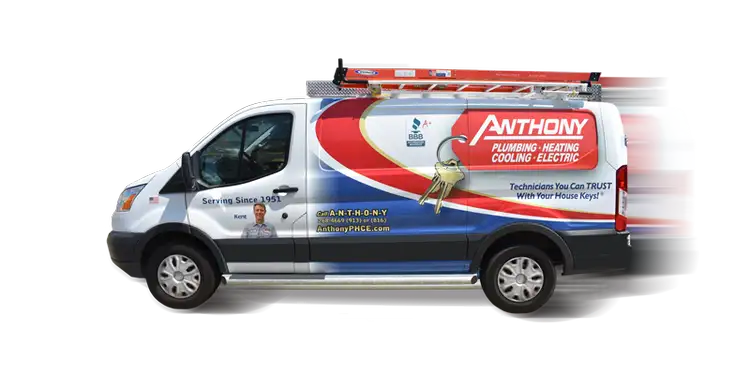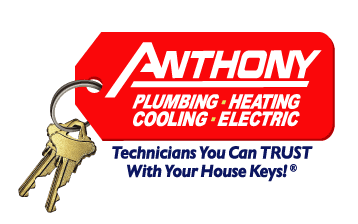Geothermal Heating & Cooling in Kansas City
Are you looking for ways to minimize your carbon footprint? Do you want to reduce your monthly bills as much as possible? Are you interested in being more self-sufficient from the existing electrical grid? Geothermal heating and cooling systems may be an interesting solution for you.
Geothermal heating and cooling systems are the latest, most interesting advancements in the home systems industry. Their carbon footprint is significantly smaller than fossil fuels, they use significantly less energy to operate, and they use the renewable “energy” of the earth to operate their heating and cooling. The EPA agrees that geothermal heating and cooling is the most environmentally-safe and cost-effective option on the market.
Trust Anthony Plumbing, Heating, Cooling, and Electric to help you determine if installing a geothermal heating and cooling system in Greater Kansas City is right for you.
What Is Geothermal Energy?
So what is geothermal energy? Essentially, geothermal energy is the use of the temperatures within the earth. By digging down, we can tap into the warmth or coolness of the earth.
No combustion is necessary for geothermal energy to produce electrical power. This is one of the great advantages of geothermal energy. Geothermal energy power plants generate 1/8th of the CO2 emissions of a typical coal power plant. A binary geothermal power plant releases no greenhouse gases.
Geothermal heat pumps use the same principle for heating and cooling.
Advantages of Geothermal Heating & Cooling
Geothermal heating and cooling is becoming increasingly popular, and there are several reasons why. Here are a few of them:
Less Electricity Used: Geothermal heating and cooling systems use significantly less energy to operate than standard central air systems. That is because electricity is only used to operate the unit’s fan, compressor, and pump. Total energy consumption can be reduced by as much as 44 percent.
Utility Bill Savings: The reduced cost of operating geothermal heating and cooling systems translates into impressive utility bill savings. The average household savings is $129 a month, or as much as 70 percent! Based on these lower utility bills, these geothermal systems usually pay for themselves after five to ten years. You can often expect 30 to 60 percent savings on heating and about 25 to 50 percent savings on cooling. A 2,000-square-foot house can be heated or cooled for as little as $1 a day with a geothermal system.
Heated Water: With a little modification, your geothermal system can also be used to help heat your water, potentially saving you 30 percent on hot water costs every year. Geothermal systems can be used to heat some or all of your hot water.
Reduced Carbon Footprint: Since geothermal systems use so much less energy, that energy is, in theory, more savings from the already overtaxed electrical grid. The electrical grid does not have to use fossil fuels to produce the electricity needed to power your heating and cooling. You can double up on this and become more independent by powering your geothermal system’s fan with solar power.
Extended Service Life: Geothermal heating and cooling systems have a much longer service life than traditional central air units. Heat pumps are generally good for 20 to 25 years, and your loop system generally has a service life of closer to 50 years.
How a Geothermal Heating & Cooling System Works
A geothermal heating and cooling system has a loop system, heat pump, liquid heat exchanger medium, compressor, and fan. The loop system is buried in the ground and called an “Earth loop.” The loop system can be vertical or horizontal, depending on your space requirements. It doesn’t have to be incredibly deep; the earth’s temperature is very stable after around six feet.
Fluids inside the loop system are circulated from the ground by the heat pump. The heat exchanger then transfers either warm or cool air to your air handler, and then that air is distributed through your house with the duct system, just like a central air system would.
If an aquifer is available (underground water), you also have the option to design an ‘open loop’ system. This open loop system drills into the underground water. Water is pumped up, runs past the heat exchanger, and is then returned to the same aquifer through reinjection.
Installing Geothermal Heating and Cooling Systems
A geothermal heating and cooling system has a loop system, heat pump, liquid heat exchanger medium, compressor, and fan. The loop system is buried in the ground and called an “Earth loop.” The loop system can be vertical or horizontal, depending on your space requirements. It doesn’t have to be incredibly deep; the earth’s temperature is very stable after around six feet.
Fluids inside the loop system are circulated from the ground by the heat pump. The heat exchanger then transfers either warm or cool air to your air handler, and then that air is distributed through your house with the duct system, just like a central air system would.
If you are interested in a geothermal system, call us for a free consultation. We can examine your property and determine if a geothermal system makes sense for your home. You need at least a little property that we can dig in and install the loop system.
The initial installation of the loop system is definitely the most expensive part. Fortunately, there are a few options to help with this. The federal government is currently offering a 30 percent tax credit on geothermal systems through 2032. There may also be local tax credits available. There are also a number of financing options through us or potentially tied to your monthly mortgage payment.
In our consultation, we can inspect your home and see what kind and what size of geothermal system your home would need. We will present you with transparent costs and guide you through the various options available.
Our expert technicians are well-trained and will do the job right. Trust the experience of Anthony Plumbing, Heating, Cooling, and Electric to professionally install a geothermal heating and cooling system in your Kansas City home.

Need Service, Repair or Installation?
Call Anthony today at (816) 320-6907 for more information about our Plumbing services and to set up an appointment, or easily schedule online!

Financing Options Available
At Anthony, we understand how important a functioning HVAC system is for your home. This is why we offer flexible financing options to help you take care of your new HVAC purchase, so you can get back to taking care of what matters most to you.

Priority Maintenance
A well-maintained HVAC system can save you from having to invest in costly repairs down the road. Learn more about our priority maintenance services.